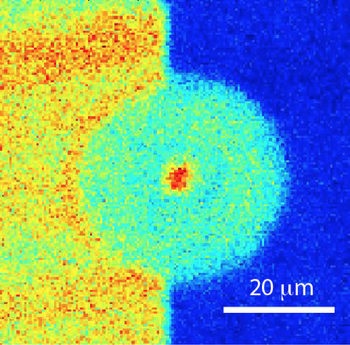August 30, 2016
A breakthrough experiment by a City College of New York team led by physicist Carlos Meriles could potentially lead to room-temperature quantum information processing in diamonds and optical data storage in three dimensions.
Meriles and his researchers successfully demonstrated charge transport between Nitrogen-Vacancy color centers in diamonds. The team developed a novel multi-color scanning microscopy technique to visualize the charge transport.
The nitrogen-vacancy (NV) center is an optically active defect in diamonds comprising a nitrogen atom and an adjacent vacancy, replacing carbon atoms in the diamond lattice. This defect has electrons that are capable of storing quantum information. To utilize this special property for quantum computation, it is required to create a network of interacting NV centers. The research so far has focused on using photons emitted by the NV centers to create this interaction under a special low temperature environment.
The CCNY team, in collaboration with researchers at the Australian National University (ANU) in Canberra, is envisioning an electron-transport-based interaction that is realizable in ambient conditions.
“This is a unique way to visualize charge dynamics in diamond” said Harishankar Jayakumar, a postdoctoral fellow in the Meriles group and lead author of the study published today in the journal “Nature Communications.”
Other key members of the CCNY team were Siddharth Dhomkar and physics graduate student Jacob Henshaw. ANU researchers Marcus Doherty and Neil Manson also contributed to the study supported by the National Science Foundation.













